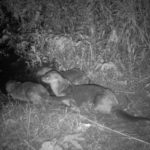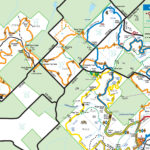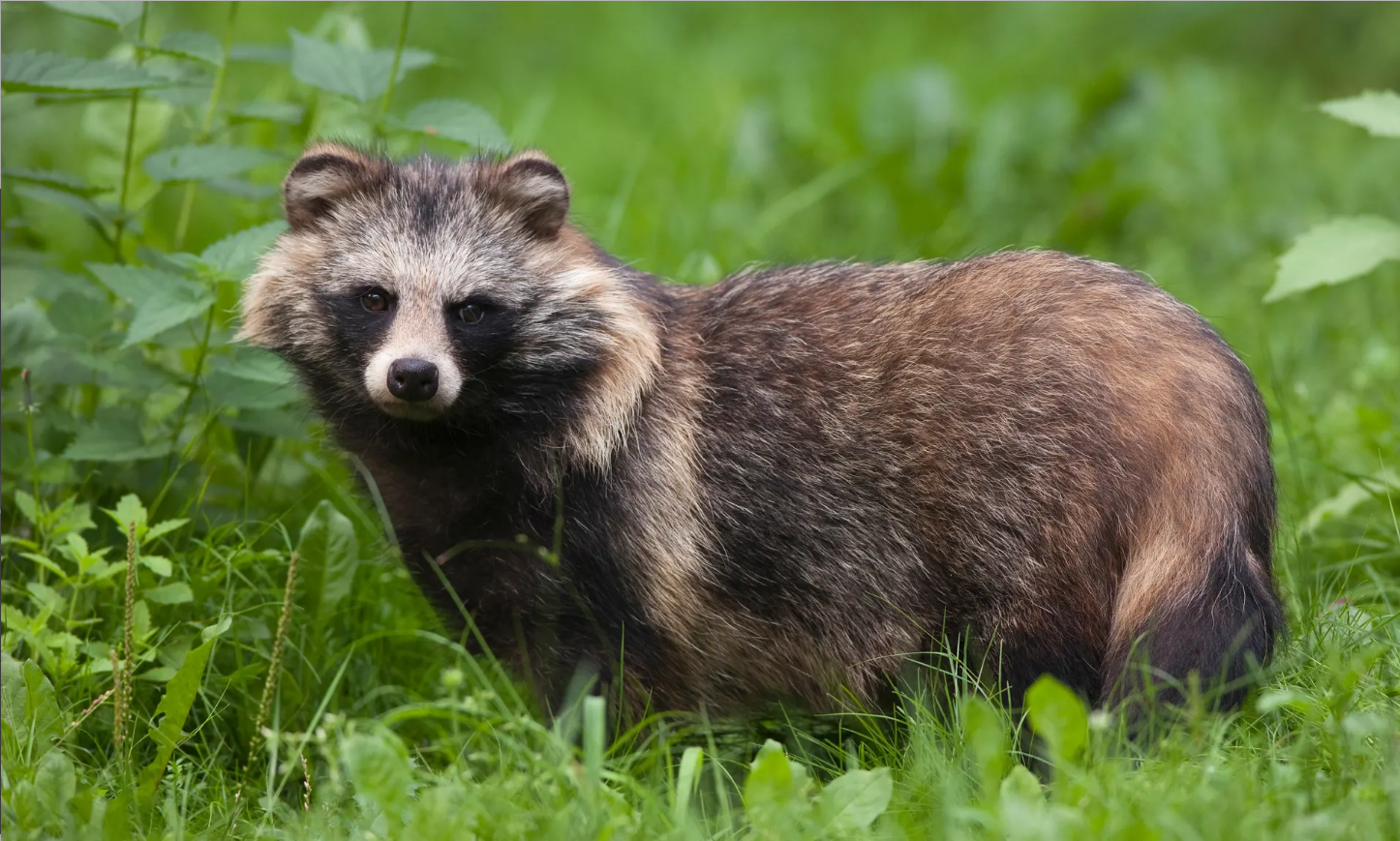
It’s time once again for an article that will be only tangentially related to DFW Urban Wildlife. Hopefully this brief diversion will appeal to the interest of the general nature enthusiast. Let’s talk about the East Asian Raccoon Dog…
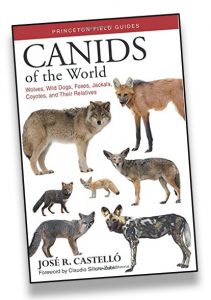
I recently stumbled across a book titled Canids of the World on Amazon, and couldn’t resist ordering a copy. And, boy, I was glad I did! The book is well organized and full of great information. The illustrations are excellent. They effectively communicate size, scale, coloration variation, and other unique characteristics of individual canid species and subspecies—that’s not easy to do! This is definitely a book I can recommend!
Reading this book also reintroduced me to an animal I’ve only ever been vaguely aware of in the past—the Raccoon Dog. As you might have guessed, the Raccoon Dog (Nyctereutes procyonoides) is so named, because this canid has an almost unbelievable physical resemblance to the North American Common Raccoon (Procyon lotor). Have a look at the comparison picture below to see for yourself…

Those who know me are well aware that the Raccoon is one of my favorite critters. Smart and resourceful, Raccoons always find a way to fascinate me. Reading the blurbs in this book regarding the Raccoon Dog only served to make me want to learn more. It was time to hit the internet. Here are some of the things I discovered…
The Raccoon Dog is—as the name implies—a Canid. Closely related to animals like wolves, coyotes, and foxes. It is only very distantly related to the Common Raccoon of North America—a Procyconid. Check out the taxonomy chart below…
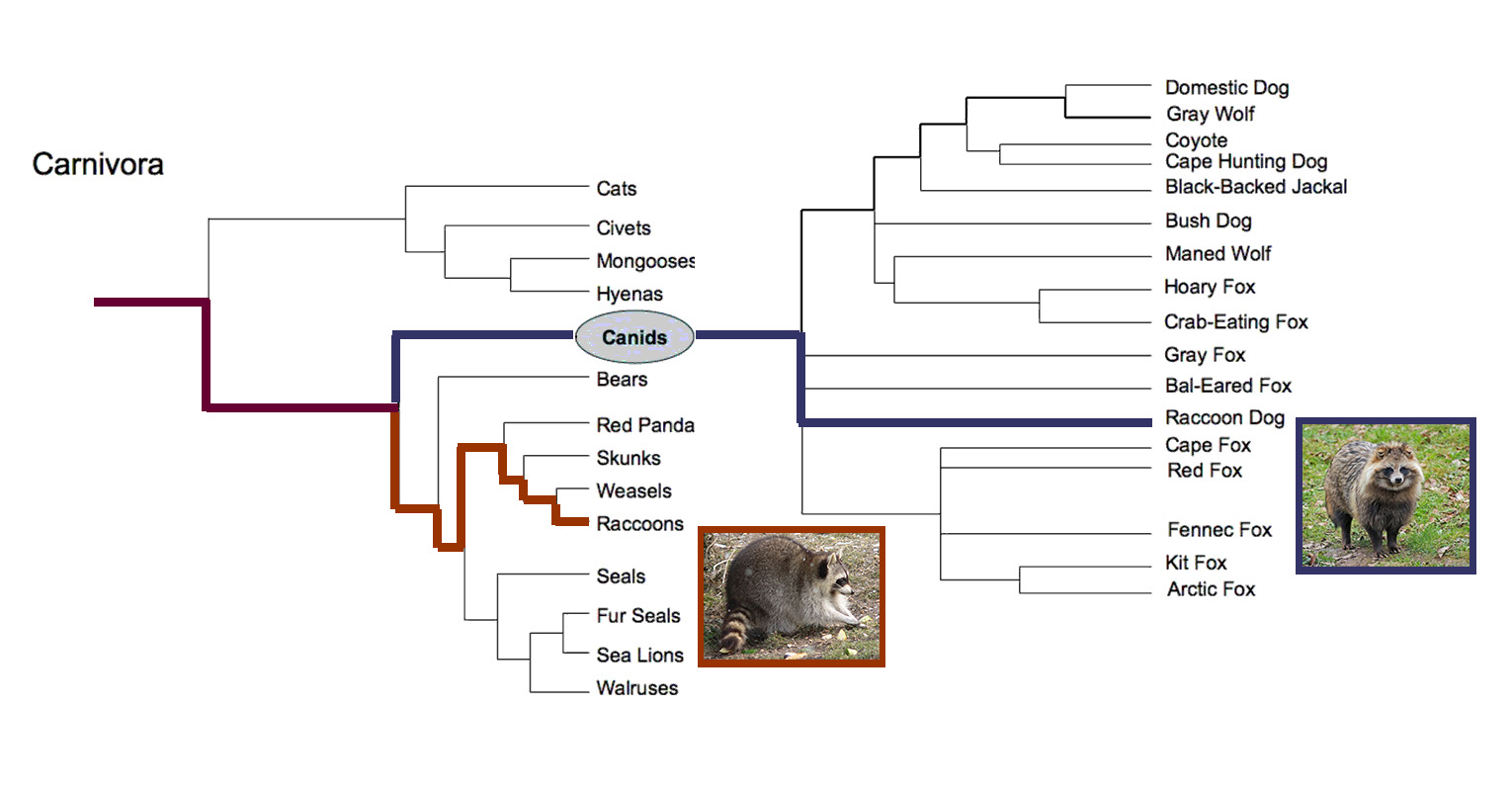
We don’t have Raccoon Dogs in North Texas or anywhere else in North America. Instead, the Raccoon Dog is native to large portions of east Asia, and has been introduced by people throughout much of northeast Europe where it is now considered an invasive species. There are five regional subspecies—or flavors—of Raccoon Dog, with slight variations in color and size throughout their range.

As mentioned, the superficial resemblance between the Raccoon Dog and the North American Common Raccoon is striking. The behavioral overlap is not inconsequential either, as they are both resourceful generalists. Here is what Wikipedia has to say about the habits of the Raccoon Dog…
The raccoon dog , also known as the mangut or tanuki is a canid indigenous to East Asia. It is the only extant species in the genus Nyctereutes. Despite its peculiar appearance, it is a close relative of true foxes.
Among the Canidae, the raccoon dog shares the habit of regularly climbing trees only with the North American gray fox, another basal species.
Raccoon dogs are omnivores that feed on insects, rodents, amphibians, birds, fish, reptiles, molluscs, carrion and insectivores as well as fruits, nuts and berries. Raccoon dogs adapt their diets to the season; in late autumn and winter, they feed mostly on rodents, carrion, and feces, while fruit, insects, and amphibians predominate in spring. In summer, they eat fewer rodents, and mainly target nesting birds and fruits, grains, and vegetables.
In reflection of their omnivorous diets, raccoon dogs have small and weak canines and carnassials, flat molars and relatively long intestines (1.5–2 times longer than other canids). Raccoon dog skulls greatly resemble those of South American foxes, particularly crab-eating foxes, though genetic studies reveal they are not closely related.
The mating season begins from early February to late April, depending on location. Raccoon dogs are monogamous animals, with pair formations usually occurring in autumn. The gestation period lasts 61–70 days, with pups being born in April–May. Litter sizes on average consist of 6–7 pups, though 15–16 pups can be born in exceptional cases.
Raccoon dogs are the only canids known to hibernate. In early winter, they increase their subcutaneous fat by 18–23% and their internal fat by 3–5%. Animals failing to reach these fat levels usually do not survive the winter. During their hibernation, their metabolism decreases by 25%.
They Raccoon Dog does not share Procyon lotor’s hand-like front paws or its ringed-tail, but the similarity of the facial features, and overall fur coloration and texture is really remarkable.
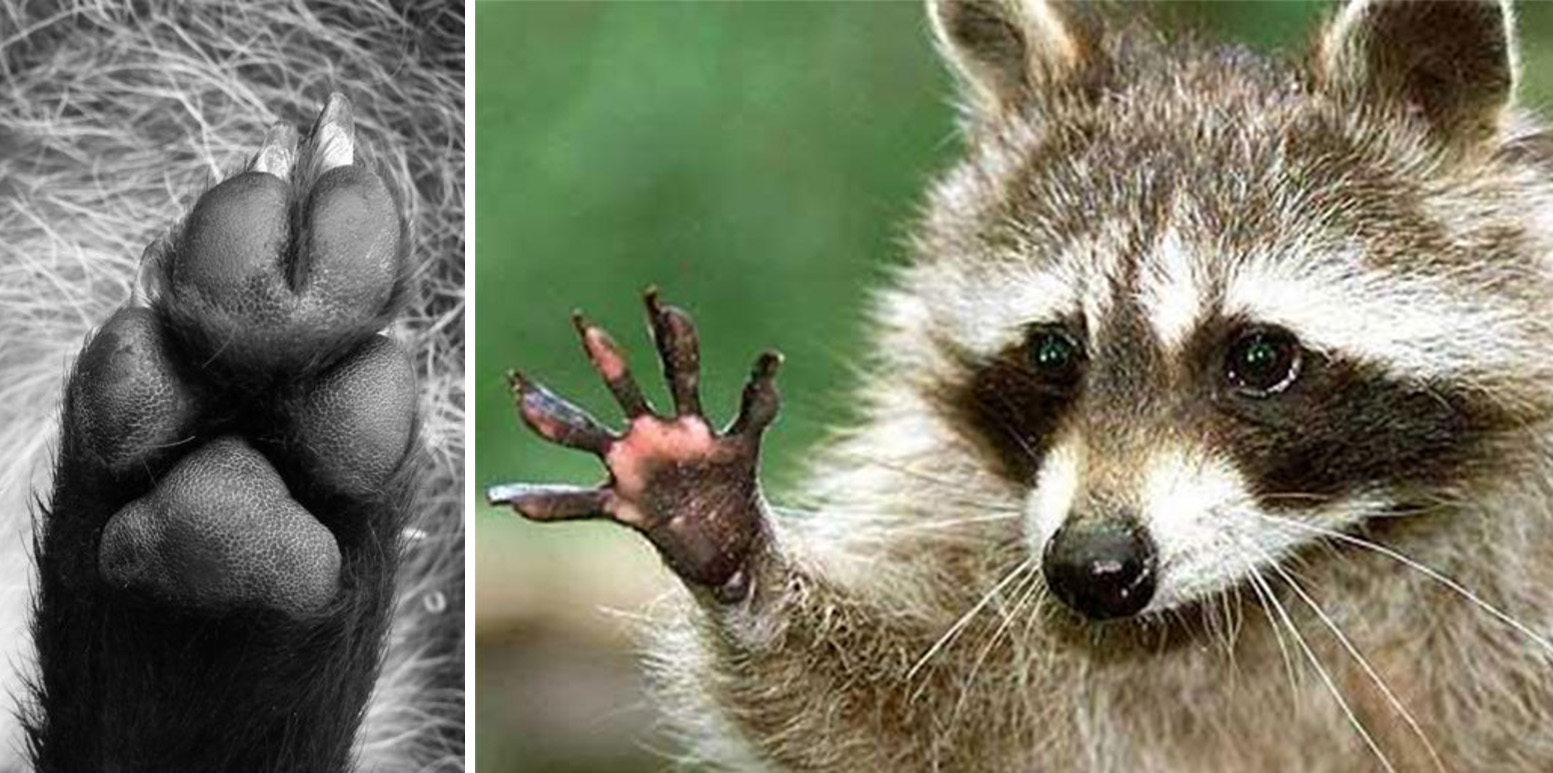
This resemblance is another powerful example of convergent evolution—though what factors may be driving the similarity of appearance is beyond me. Perhaps the mask enhances night-vision in some way. Maybe the coarse gray fur is particularly well suited to northern latitudes. Maybe it provides more effective camouflage at night. Or maybe it is all just a wild coincidence.
While the appearance parallels are challenging to explain, the behavioral convergence is perhaps easier to appreciate. Everyone has to eat. Evolving as a smart and adaptable generalist makes finding food easier.
Here is a short video providing an excellent primer on the Raccoon Dog. It will get you up to speed fast! Give it a watch…





